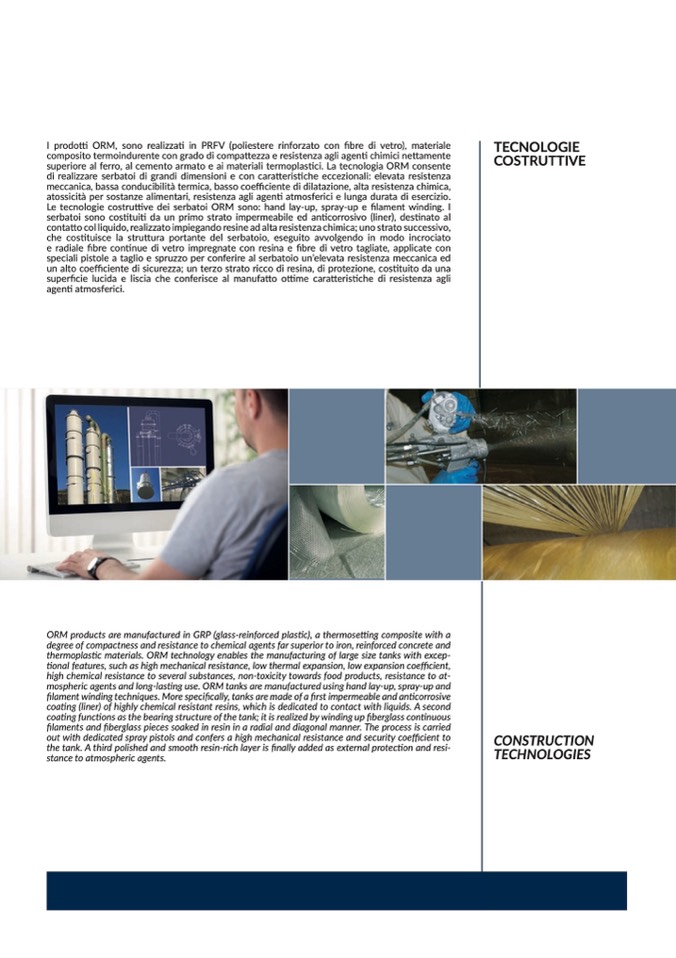
I prodotti ORM, sono realizzati in PRFV (poliestere rinforzato con
fibre di vetro), materiale
composito termoindurente con grado di compattezza e resistenza agli agenti chimici ne
ttamente
superiore al ferro, al cemento armato e ai materiali termoplastici. La tecnologia ORM consente
di realizzare serbatoi di grandi dimensioni e con caratteristiche eccezionali: elevata resistenza
meccanica, bassa conducibilità termica, basso coefficiente di dilatazione, alta resistenza chimica,
atossicità per sostanze alimentari, resistenza agli agenti atmosferici e lunga durata di esercizio.
Le tecnologie costruttive dei serbatoi ORM sono: hand lay-up, spray-up e filament winding. I
serbatoi sono costituiti da un primo strato impermeabile ed an
ticorrosivo (liner), destinato al
contatto col liquido, realizzato impiegando resine ad alta resistenza chimica; uno strato successivo,
che costituisce la struttura portante del serbatoio, eseguito avvolgendo in modo incrociato
e radiale fibre continue di vetro impregnate con resina e fibre di vetro tagliate, applicate con
speciali pistole a taglio e spruzzo per conferire al serbatoio un’elevata resistenza meccanica ed
un alto coefficiente di sicurezza; un terzo strato ricco di resina, di protezione, cos
tituito da una
superficie lucida e liscia che conferisce al manufatto ottime caratteristiche di resistenza agli
agenti atmosferici.
TECNOLOGIE
COSTRUTTIVE
ORM products are manufactured in GRP (glass-reinforced plastic), a thermose
tting composite with a
degree of compactness and resistance to chemical agents far superior to iron, reinforced concrete and
thermoplastic materials. ORM technology enables the manufacturing of large size tanks with excep-
tional features, such as high mechanical resistance, low thermal expansion, low expansion coefficient,
high chemical resistance to several substances, non-toxicity towards food products, resistance to at-
mospheric agents and long-lasting use. ORM tanks are manufactured using hand lay-up, spray-up and
filament winding techniques. More specifically, tanks are made of a first impermeable and an
ticorrosive
coating (liner) of highly chemical resistant resins, which is dedicated to contact with liquids. A second
coating functions as the bearing structure of the tank; it is realized by winding up fiberglass con
tinuous
filaments and fiberglass pieces soaked in resin in a radial and diagonal manner. The process is carried
out with dedicated spray pistols and confers a high mechanical resistance and security coe
fficient to
the tank. A third polished and smooth resin-rich layer is finally added as external protection and resi-
stance to atmospheric agents.
CONSTRUCTION
TECHNOLOGIESy

